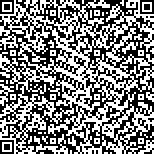| 摘要: |
| 采用点种法并以副溶血弧菌(Vp1.2164)和溶藻弧菌(Va-Y)为弧菌指示菌, 对从健康的大黄鱼肠道内分离的 115 株细菌进行体外拮抗试验。并对筛选出的拮抗菌进行抗菌谱测定, 最后利用VITEK-32 细菌快速鉴定系统和 16S rRNA 基因序列对拮抗菌进行鉴定。结果表明, 从中筛选到 3 株有较强拮抗作用的菌株, 编号分别为X1402-1、 X1108和X3914, 且菌株X1402-1的抗菌作用最强, 抗菌谱最广, 21 株病原指示菌中, 对 16 株均能产生较强的抑制作用, 其中对 Vp-1.2164 的抑菌直径最大, 达到28.5mm, 对Va-Y的抑菌直径为8.7mm; 其次为菌株X1108和X3914, 对两种指示弧菌的抑菌直径分别为: 12.0mm、9.0mm 和 0mm、7.2mm。经 VITEK-32 细菌快速鉴定系统鉴定, 3 株拮抗菌分别与铜绿假单胞菌, 恶臭假单胞菌, 地衣芽孢杆菌的相似性均为 99%。 通过 16S rRNA 基因序列分析表明, 3 株拮抗菌分别与类产碱假单胞菌 Pseudomonas pseudoalcaligenes (EU419918)、恶臭假单胞菌 Pseudomonas putida (FJ440105)和地衣芽孢杆菌 Bacillus licheniformis (DQ988136)的 16S rRNA 基因同源性最高, 分别为 100.0%、97.5%、99.0%。综合分析试验结果, X1402-1、X1108 和 X3914 分别被确定为类产碱假单胞菌、恶臭假单胞菌和地衣芽孢杆菌。
|
| 关键词: 点种法, 拮抗作用, 抗菌谱, 筛选, 细菌鉴定 |
| DOI:10.11693/hyhz201005007007 |
| 分类号: |
| 基金项目:上海市教委科研创新项目, 08YZ116号; 上海市重点学科建设项目, Y1101号 |
|
| SCREENING AND IDENTIFICATION OF VIBRIO-ANTAGONISTIC BACTERIA FROM THE GASTROINTESTINAL TRACT OF PSEUDOSCIAENA CROCEA |
|
WANG Juan1, FENG Yong-Hui1, CAI Li-Sheng2, WANG Jian3, QU Xian-Cheng1, ZHANG Qing-Hua1
|
|
1.Key Laboratory of Exploration and Utilization of Aquatic Genetic Resources, Ministry of Education, College of Fisheries and Life Science, Shanghai Ocean University;2.Ningbo Institute of Technology, Zhejiang University;3.Shanghai Animal Disease Control Centre
|
| Abstract: |
| One hundred and fifteen strains of bacteria were isolated from the gastrointestinal tract of cultured, healthy Pseudosciaena crocea and examined for their antagonistic activities against pathogenic Vibrio parahaemolyticus (Vp-1.2164) and Vibrio alginolyticus (Va-Y) by the dot-inoculating method. Three strains of bacteria (X1402-1, X1108 and X3914) inhibited the growth of the pathogenic vibrios. Strain X1402-1 showed the strongest antagonistic activity, with the diameters of inhibition zones of Vp-1.2164 and Va-Y being 28.5mm and 8.7mm, respectively. The diameters of inhibition zones of Vp-1.2164 and Va-Y were 12.0 and 9.0mm, respectively, for strain of X1108, and 0 and 7.2mm, respectively for strain X3914. In addition, their antibacterial spectra were studied. Strain X1402-1 showed the widest antibacterial spectra, inhibiting the growth of 16 out of the 21 strains of bacteria tested. Furthermore, identification of X1402-1, X1108 and X3914 was performed by two methods. With the VITEK-32 Bacteria Identification System (Biomerieux Company), X1402-1, X1108 and X3914 were recognized as Pseudomonas aeruginosa, Pseudomonas putida, and Bacillus licheniformis, respectively; their similarities were 99%. Complementally, the results of 16S rRNA gene sequence analysis showed that nucleotide homology of these three antagonistic strains to Pseudomonas pseudoalcaligenes (EU419918), Pseudomonas putida (FJ440105), and Bacillus licheniformis (DQ988136) were 100.0%, 97.5% and 99.0%, respectively. In summary, strains of X1402-1, X1108 and X3914 were concluded to be Pseudomonas pseudoalcaligenes, Pseudomonas putida and Bacillus licheniformis, respectively.
|
| Key words: Dot-inoculating method, Antagonism, Antibacterial spectra, Screening, Bacteria identification |
